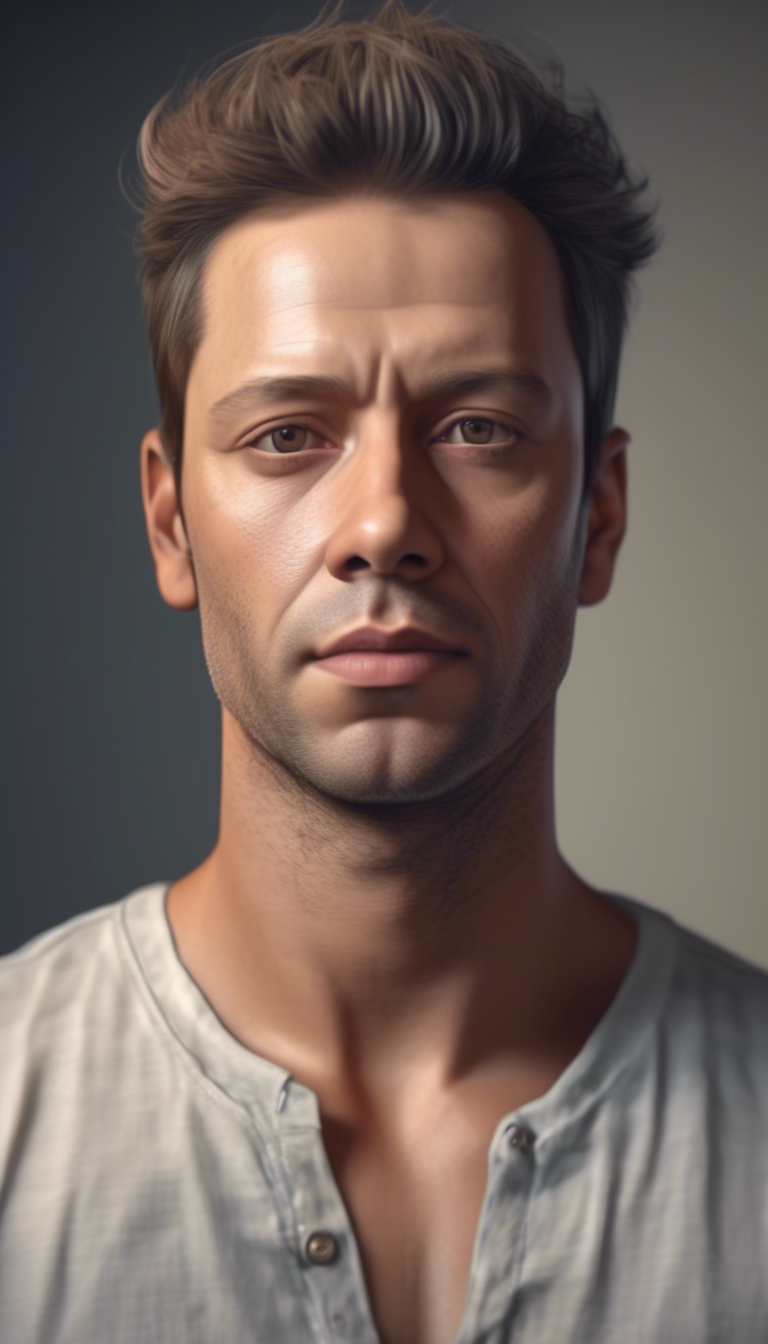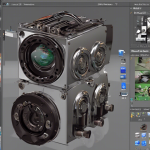The Evolution of AI-Generated Images Featuring Male Figures
The emergence of artificial intelligence has revolutionized various industries, including the realm of digital art. The creation of AI-generated images featuring male figures highlights a fascinating journey characterized by innovation, diversity, and continuous improvement. As algorithms advance, so does the capacity to generate increasingly complex and relatable visuals that resonate with audiences.
One of the initial milestones in AI-generated images was the use of Generative Adversarial Networks (GANs). GANs enabled machines to learn from vast datasets and produce images that replicate the intricacies of human creativity. This technique paved the way for machines to generate realistic male figures, ranging from everyday individuals to stylized characters. The realism in these AI images can sometimes blur the line between digital art and traditional illustration.
The evolution of AI-generated images featuring male figures can be broken down into several key phases:
- Early Experiments (2014-2016): Initial efforts revolved around simplistic models that barely captured the essence of human features. Images were often pixelated and lacked diversity, presenting a one-dimensional view of male forms.
- Improvement in Algorithms (2017-2019): With the advancement of GANs, the realism of generated images dramatically improved. These years saw a shift towards depicting a broader range of appearances, styles, and cultural representations.
- Integration of Style Transfer (2020-present): Modern AI systems now incorporate style transfer techniques. This allows the generated male figures to not only appear realistic but also capture unique artistic styles, resulting in rich and diverse representations.
While creating AI-generated images featuring male figures, it is essential to consider the ethical implications. As the technology develops, so does the potential for misuse. The ability to create lifelike images can lead to deepfake controversies or the perpetuation of stereotypes. Developers and artists alike must advocate for responsible usage, ensuring that the technology serves to enhance creativity rather than distort reality.
In today’s digital landscape, users can easily access platforms enabling them to create their own AI-generated images. Tools like DALL-E and Artbreeder allow individuals to customize male figure images based on various parameters, from age and ethnicity to clothing style and setting. Such accessibility has democratized art creation, allowing non-artists to express their ideas visually.
As AI’s role expands in the creative process, its influence on male representation is equally noteworthy. The technology allows artists to present a nuanced portrayal of masculinity that embraces various cultural backgrounds, appearances, and personal expressions. This shift challenges traditional stereotypes and encourages a broader understanding of what it means to be male in today’s society.
Additionally, AI-generated images featuring male figures have found their way into various domains, including advertising, entertainment, and gaming. Companies leverage these images for marketing campaigns, art in video games, and even creating characters for animated series. By incorporating AI-generated visuals into storytelling, brands can connect more deeply with audiences, as these figures often reflect contemporary ideals and preferences.
However, engaging readers and creators requires looking beyond mere images. The narratives and stories that accompany these male figures are crucial in framing their meaning. As such, content that combines strong imagery with compelling storytelling proves to be more effective in captivating audiences. When the visual elements resonate with an audience’s experiences, they foster a more profound connection.
The future of AI-generated images featuring male figures is both exciting and complex. As machine learning models improve, the authenticity and emotional depth of these images will likely evolve. More diverse representations will emerge, allowing for a rich tapestry of male identities to be showcased. As society progresses, so will the narratives we tell through AI-generated art, consistently mirroring our changing world.
The evolution of AI-generated images featuring male figures marks a significant milestone in the intersection of technology and art. As algorithms enhance creativity and representation, it is essential to navigate the ethical landscape responsibly. Embracing this technology with an awareness of its implications will shape how we perceive and depict male figures in the digital domain for years to come. The convergence of art and technology continues to inspire, challenge, and redefine our understanding of masculinity.
Exploring the Cultural Impact of Male Representations in AI Art
The intersection of artificial intelligence and art has transformed how we perceive and create images, especially when focusing on male representations. AI-generated images, particularly those depicting men, reflect broader cultural narratives and personal biases inherent in the data they are trained on. Understanding this phenomenon is essential as it reveals the underlying implications of male representations in AI art.
AI image generators utilize vast amounts of existing data to produce their works. This data often includes countless images ranging from classical art to modern photography. As a result, the portrayals of males in these images often draw from a historical context filled with specific ideals and stereotypes.
One significant impact of male representations in AI art is the reinforcement of traditional masculine stereotypes. For instance, images created by AI may favor depictions of strength, stoicism, or aggression due to bias in the training data. These characteristics can perpetuate a narrow view of masculinity, limiting the diversity of how male figures are perceived and represented in visual culture.
Conversely, AI also has the potential to challenge and expand these stereotypes. By training AI models on diverse datasets that include representations of men from various cultures, body types, and expressions, we might see a broader spectrum of masculine identity in generated imagery. This can foster greater acceptance and understanding of different male experiences, allowing for depictions of vulnerability, emotional depth, and individuality.
The cultural implications of these representations extend beyond aesthetics. Reflecting on the following points can help contextualize their significance:
- Influence on Self-Image: AI-generated images of men can shape how individuals view themselves and their identities. Young boys and men who encounter AI art that showcases a narrow standard of masculinity might feel pressured to conform, potentially leading to negative self-esteem and body image issues.
- Shaping Gender Norms: Repeated exposure to AI images that portray stereotypical male traits can reinforce societal expectations, impacting behaviors and attitudes. This becomes particularly relevant in understanding how these norms evolve over time.
- Art as a Reflection of Society: Art inherently mirrors the culture from which it emerges. AI-generated images act as a lens, allowing us to examine contemporary societal values regarding masculinity and gender roles.
As technology evolves, the capability of AI to generate images becomes increasingly sophisticated. Creative professionals can harness this power to explore new narratives around masculinity. By incorporating feminist theories and queer perspectives into the training sets, there lies significant potential for AI to present more nuanced portrayals.
Moreover, the responsibility of artists and developers is paramount in guiding AI towards ethical representations. They must be aware of the biases that can influence AI outputs and actively seek to create inclusive datasets. This endeavor requires collaboration across disciplines, engaging sociologists, psychologists, and cultural critics to inform the AI development process.
The rise of AI-generated art also prompts critical conversations about authorship and authenticity. When a machine produces an image of a man, who truly owns that representation? The artist, the programmer, or the culture from which the images were drawn? These questions complicate how we might traditionally view artwork and male representations, blurring the lines between creator and creation.
Furthermore, as consumers of AI art, it’s crucial to approach these images with a critical mindset. Understanding the context of AI-generated works enables us to appreciate their complexities rather than accepting them at face value. This awareness can inform our interactions with digital media, encouraging us to engage with AI art while questioning the societal standards it represents.
The cultural impact of male representations in AI art is profound and multifaceted. This emerging technology presents both opportunities and challenges, requiring us to reflect on how we perceive masculinity and identity in this evolving landscape. By fostering a responsible approach to AI development and embracing diverse representations, we can shape a more inclusive future in the digital arts.
Conclusion
The journey of AI-generated images featuring male figures marks a significant shift in both technology and art, reflecting broader social changes. As artificial intelligence continues to improve its capacity for generating images, the representations of masculinity evolve, presenting a dynamic reflection of contemporary society’s views on gender. Recent advancements in AI image generation empower artists and businesses to create unique portrayals that range from hyper-realistic to entirely imaginative constructions of male figures. This evolution underlines not just technical innovation but also the societal dialogue around identity, masculinity, and the expectations placed on male representation in visual culture.
AI-generated images featuring male figures challenge traditional notions of masculinity and invite viewers to reconsider what it means to be male in today’s world. Historically, representation of men in art has often emphasized ideals such as strength, power, and stoicism. However, the flexibility of AI tools enables the exploration of these ideals in nuanced and subtle ways, tapping into a range of emotions and characteristics that extend beyond mere archetypes. This expanded portrayal signals a democratization of creative expression, where diverse narratives can be shared and amplified. In this process, AI plays a crucial role, providing innovative platforms for artists to push boundaries and explore complex aspects of male identity.
The cultural implications of these AI-generated images are profound. They not only serve as visual artifacts but also facilitate conversations around masculinity and society’s evolving expectations of men. For instance, the prominence of softer, more vulnerable representations challenges toxic masculinity and encourages inclusivity. As artists use AI to depict male figures in a variety of contexts—some that align with traditional masculinity and others that oppose it—they reflect the increasingly pluralistic understanding of gender. This shift is critical in a world where conversations surrounding gender identity and representation are ever more vital, highlighting the role images play in shaping perceptions and beliefs.
Moreover, the global reach of AI-generated images means that representations of masculinity can transcend cultural boundaries, promoting a richer cross-cultural dialogue about gender. While some representations may align with Western ideals, others may resonate more with Eastern, African, or Latin American perspectives on malehood. This cultural diversity enriches the visual language surrounding masculinity and cultivates understanding across different societies. As a result, viewers can engage with a broader, more inclusive narrative that respects and honors various interpretations of what it means to be male.
The accessibility of AI technology also democratizes the creation of male imagery, shifting power dynamics within the art world. New artists who may not have traditional training can harness AI tools to explore their concepts and visions. This technology empowers marginalized voices, allowing them to contribute to the discourse on masculinity in ways that might have previously been restricted. In essence, AI serves as a catalyst for innovation and inclusivity, leading to an expansive array of representations featuring male figures.
However, as we delve deeper into this realm of AI-generated art, it is vital to address the ethical considerations surrounding these creations. The potential for misuse or misrepresentation could lead to stereotypes or harmful depictions if not approached with care. Artists, programmers, and audiences alike must engage in critical conversations about the implications and responsibilities involved in generating images, particularly in portraying genders and identities. The responsibility lies with creators to be thoughtful and intentional about how they depict the multifaceted nature of masculinity, ensuring their work enriches discourse rather than perpetuates harm.
The landscape of AI-generated images featuring male figures is continuously evolving, reflecting broader societal changes and challenging traditional norms. As technology advances, the representations of men will likely continue to become more intricate and varied. This evolution invites us to contemplate the broader cultural narratives at play, encouraging a dialogue that fosters understanding and acceptance. Ultimately, it is the synergy between technology, artistic vision, and cultural awareness that will shape the future of male representation in AI art. Embracing this evolution not only enriches our understanding of masculinity but also paves the way for more authentic and diverse portrayals in the digital age. By recognizing the power of AI to transform our perceptions and expressions of male identity, we can better appreciate the dialogues it fosters around gender, allowing for a more compassionate and inclusive society.


